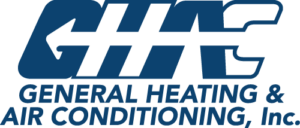Burners Won’t Stay Lit
BURNERS DON’T STAY LIT – The furnace burners fire, but go off before the thermostat temperature is satisfied.
POSSIBLE PROBLEM & DESCRIPTION
Dirty Flame Sensor – Qualified Technician Recommended
After a gas furnace opens the gas valve to allow gas into the combustion chamber, the furnace control board will monitor for proper ignition of the gas. This is accomplished by a flame sensor. If the flame sensor does not detect a flame within 6 seconds after opening the gas valve, the ignition cycle is terminated.
If the burners visibly ignite, but then go out after approximately 6 seconds, this may indicate a dirty flame sensor.
Multiple failed ignition attempts will typically generate an “Ignition Failure” diagnostic on the ignition control board.
A dirty flame sensor will generally cause occasional ignition failures, but may allow the furnace to fire and function properly the majority of the time.
Faulty Ignition Control – Qualified Technician Recommended
If the flame sensor is clean but the burners still shut off around 6 seconds after ignition, this may be the result of a faulty ignition control.
A common cause of a faulty ignition control which fails to sense flame is water damage. Look for signs of moisture or water from a clogged condensate drain or leaking vent pipe.
High Limit Trip – Qualified Technician Recommended
Gas furnaces are protected against over-temperature by a high-limit switch. When the high-limit switch trips it will turn-off the burners. When the heat chamber cools, the limit switch will re-activate and allow the burners to re-fire.
High limit trips are generally caused by a lack of airflow across the heat chamber. Possible causes are a bad blower motor, a clogged air filter, blocked or restricted registers, or under-sized ductwork.
A high-limit switch trip caused by no airflow (bad blower) will typically occur within 30-60 seconds after ignition.
A high-limit switch trip caused by low airflow may only occur after long run cycles.
On most newer gas furnaces with an integrated control board, a limit switch fault will generate a diagnostic code – usually a code 4, but it varies with the board manufacturer.
Pressure Switch Trip – Qualified Technician Recommended
Most newer gas furnaces use one or more pressure switches to monitor for proper venting and condensate drainage. It is not unusual for a partially restricted venting system or a clogged drain to allow a furnace to fire and then shut-off some time during a heating cycle.
On most newer gas furnaces with an integrated control board, a pressure switch fault will generate a diagnostic code – usually a code 2 or 3, but it varies with the board manufacturer.

